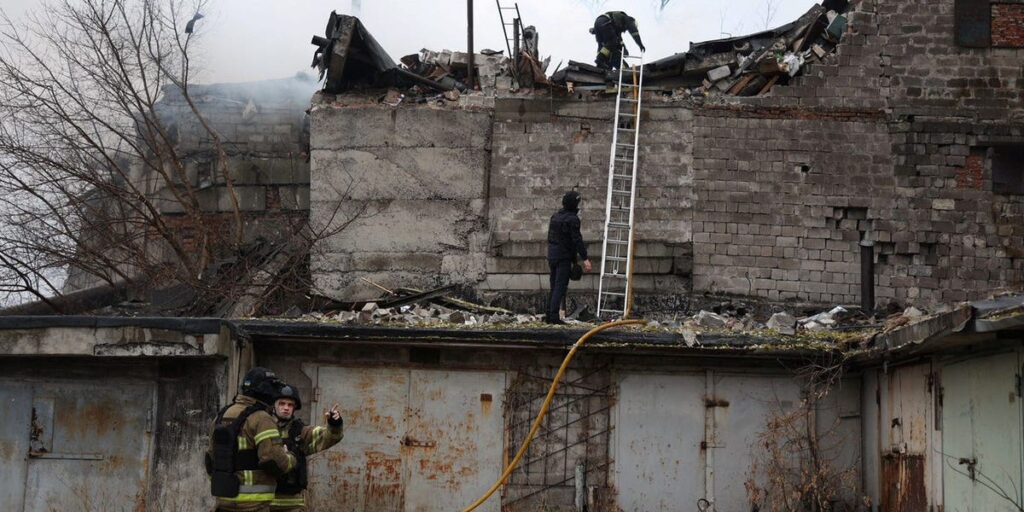
Russia is ramping up production of its Oreshnik intermediate-range hypersonic missiles, a move that underscores President Vladimir Putin’s strategic ambitions amid escalating tensions with the United States. The announcement follows the missile’s first operational use in a strike on Ukraine’s Dnipro region, highlighting its potential role in future military engagements.
In a recent address to military cadets, Putin emphasized the significance of the Oreshnik missile, which boasts a range of up to 3,415 miles, making it capable of reaching targets across Europe and even the western United States. He asserted that the missile is nearly impossible to intercept and carries a destructive force comparable to nuclear weapons.
Strategic Implications of the Oreshnik Missile
The development of the Oreshnik missile represents a critical component of Russia’s military strategy. Putin’s declaration that “serial production of the latest Oreshnik medium-range missile system is under way” signals a commitment to enhancing Russia’s offensive capabilities. This comes amidst ongoing geopolitical tensions and a renewed focus on missile defense systems.
The missile’s deployment in Ukraine last November marked a significant milestone, with Putin claiming there were “currently no ways of counteracting this weapon,” according to the BBC. However, historical precedents suggest that such claims should be met with caution. Previous assertions about the invincibility of Russian missiles have been challenged by their downing in combat situations.
Expert Analysis on the Oreshnik’s Impact
Despite the Oreshnik’s formidable specifications, experts remain skeptical about its transformative impact on global military dynamics. Michael Bohnert, a defense analyst at RAND, highlighted the challenges posed by the missile’s range and speed but cautioned against overstating its practical impact.
“When it comes to the ability of Oreshnik missiles and bypassing defenses, the fundamental issue with missile defense is not capability but the quantity and location of missile defenses tailored to the threat,” Bohnert explained.
He further noted the economic considerations, stating, “Oreshnik missiles are incredibly expensive for their limited conventional warhead size and quantity. While it has the range to target many locations without matching air defenses, its literal kinetic impact would still be low for the cost.”
Grace Mappes, a Russia analyst at the Institute for the Study of War, echoed these sentiments, suggesting that the Oreshnik does not represent a major shift in Russia’s military capabilities. She pointed out that Russia already possesses other missiles with comparable ranges and greater payloads.
“Russia regularly strikes Ukraine with nuclear-capable missiles and has long had missiles in mainland Russia and Kaliningrad capable of striking NATO states,” Mappes said. “These capabilities have not changed. Russia is just using the Oreshnik to make an old threat upon which Russia has never acted seem new.”
Historical Context and Future Prospects
The introduction of the Oreshnik missile into Russia’s arsenal draws parallels with past military developments, where technological advancements have often been used as strategic leverage in geopolitical negotiations. The missile’s potential to challenge US-made defense systems adds a new dimension to the ongoing military rivalry between the two nations.
Putin’s proposal of a “duel” with the US to demonstrate the Oreshnik’s superiority underscores the symbolic significance of this missile in Russia’s broader military strategy. However, the practical implications of such a demonstration remain uncertain, given the complexities of modern missile defense systems.
Looking ahead, the expansion of the Oreshnik missile program is likely to prompt responses from NATO and other Western allies, potentially leading to an arms race in missile technology. The need for enhanced air defenses to protect critical infrastructure will become increasingly pressing as nations seek to counteract the perceived threat posed by hypersonic missiles.
As the geopolitical landscape continues to evolve, the role of advanced missile systems like the Oreshnik in shaping military strategies and international relations will remain a focal point of analysis and debate.





